|
Never fear -- it is not human
blood. But Jordan Eagles' blood and resin pieces are certainly a bloody
beautiful mess. The images explode dramatically onto the wall, unframed.
His method seems to be mostly splattering, slashing, and dripping. On
the level of basic composition, he's got two major switches, circle
and line. To be sure, each piece has elements of both and it is often
the spastic incorporation of many small lines in conversation with rounded
shapes, or a collecting pool of bubbles penetrated by jagged flourishing
lines, that makes the work so fascinating to look at. Of course, there
are no absolutely straight or perfectly round shapes in the compositions,
the matter and method being of a purely organic nature. In fact, at
times, the rounded and the lined patterns seem to continue in a fractal
manner - one within another within another. In the case of "LFTS",
the viewer first sees the reaching, fingering, branching arms of the
line structure. Next, there are smaller circular drops reacting to the
motion of the lines with their round stillness, adding wetness in the
familiar form of liquid. Amongst those, even smaller, like background
white noise, is a vast desert of crackling tiny lines. They look like
thirsty clods of dirt, crinkling and growing ever smaller and more intricate.
Meanwhile, every bright straight spatter is pebbled with miniscule bubbles,
crowding and creating patterns all their own. Deeper and deeper the
patterns fade into an actual 3D piece - a layer of resin that is dried
before the next layer is applied stays each layer of blood. The absurd
patterns already affect the eye on an aesthetic level. These layered
levels add even more depth. Overall, the shapes and pattern are discombobulating
and intense.
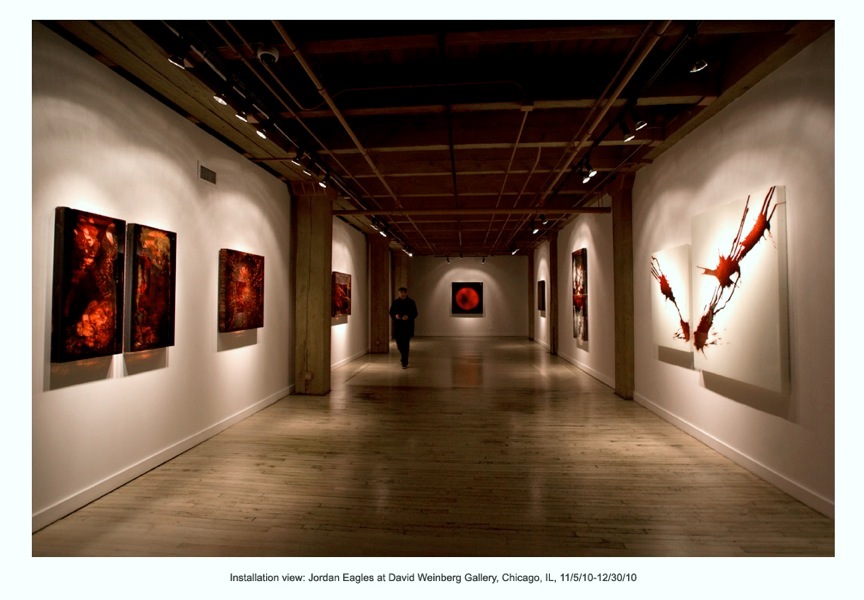
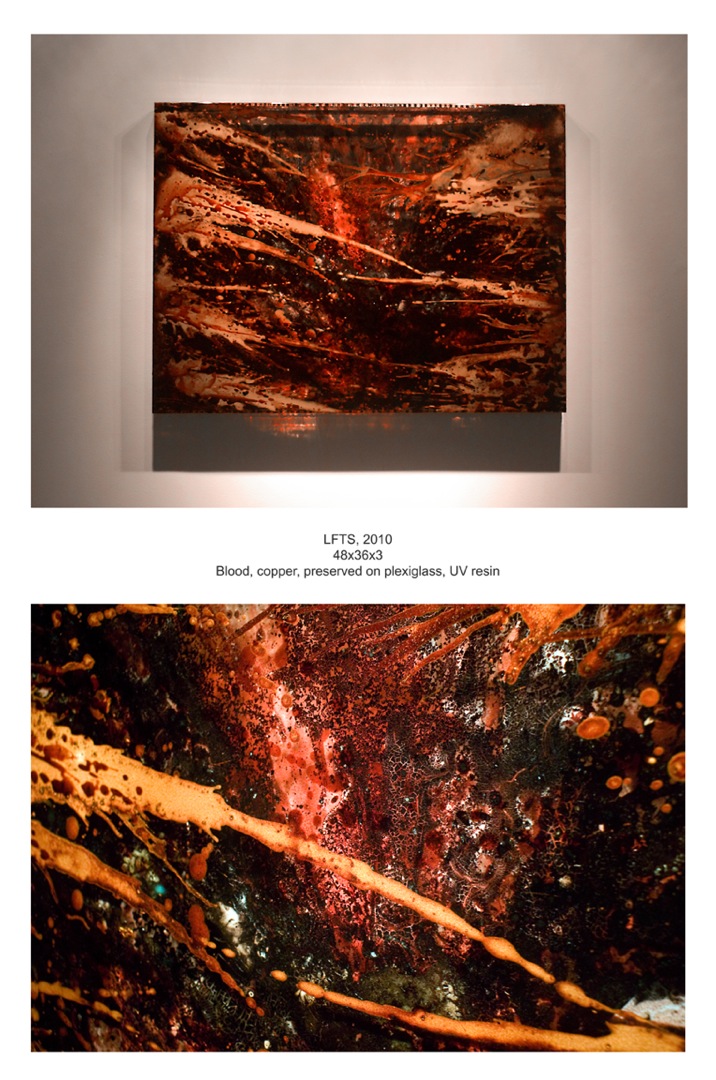
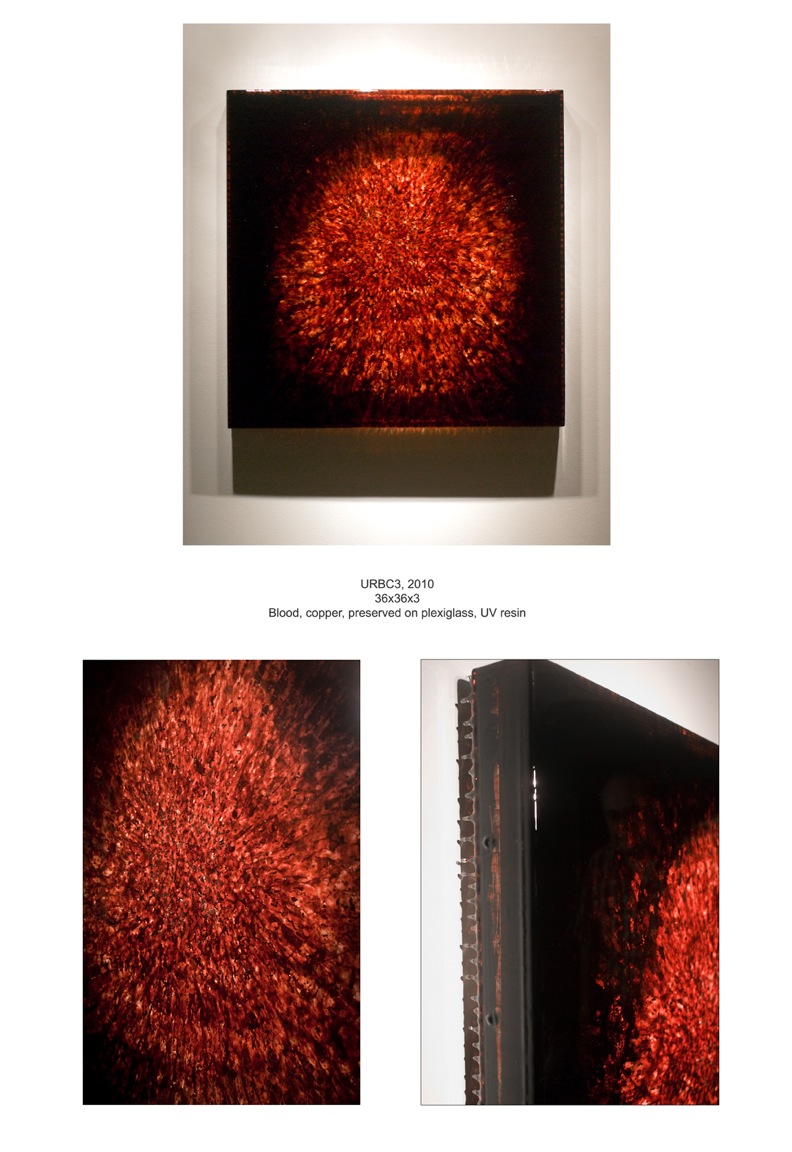
The compositions are largely accidental, a result of artistic intension
and the consequential conclusion of a good throw. The color, however,
must be acutely thought out, I imagine. There is really no question
that Eagles' palette is "blood red". The colors are truly
quintessentially the color of blood and it is a chroma of color that
can't quite be replicated. As art lovers, we can appreciate the ingenuity
of choosing a medium with a palette all its own. As human beings, a
primal, innate acknowledgement of this specific color takes place in
the back of the brain and tries to repel us. Don't be surprised if your
fight or flight response bumps you upon first entering the gallery.
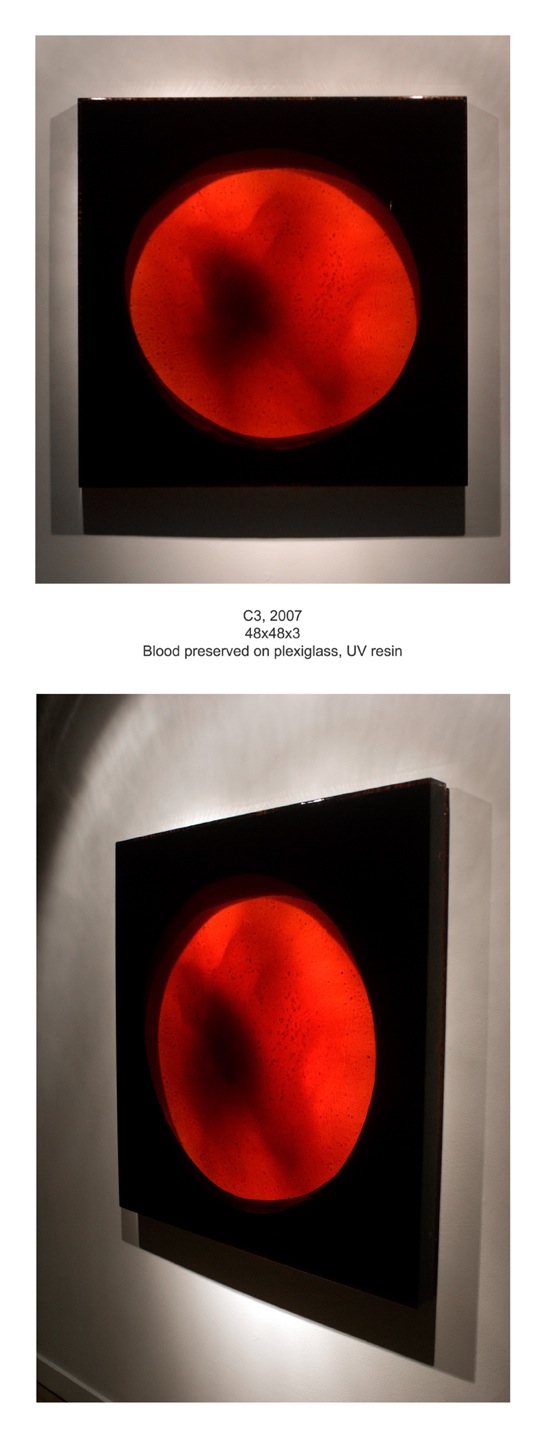
Eagles really appreciates the full color palette of blood. It is not
just red. It has a range of tints, shades and hues. Many of his images
incorporate copper as well, a tasty spice for the stew. In some images,
white and black and a range of red tones even gold and copper all interact.
Sometimes only black and red. Sometimes only red. Black tones are extremely
saturated and severe. To be colorblind would be to miss 80% of this
show. A sensitive eye will love the luxurious richness of some of the
creamy tones and the intimate interaction of yin-yang-esque mergers
of color giving complexity to the taste. The
intensity of the large-scale format also adds to the experience. The
pieces are not bite-sized, easy to confront. Most pieces are a little
larger than 3' x 3'. In this scale, and mounted so that the center is
at eye level, they seems to loom, to almost challenge the viewer to
approach.
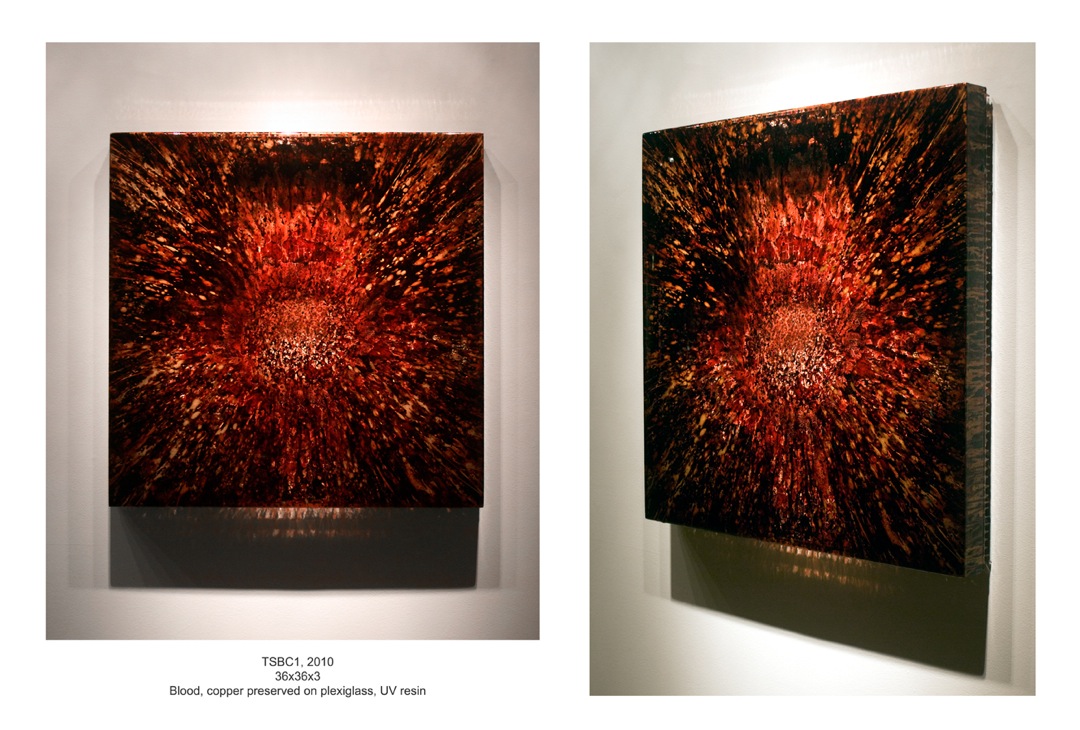
Being a student of philosophy, I was immediately intrigued about the
idea of blood as artistic medium. At first it seems very morbid to have
a lot of blood thrown up on the wall, but consider the implication of
life-blood, one of the bodies most basic components, acting as the voice
for natural and organic creative design. Also, that in death can come
beauty. Imagine for a moment that in your veins in this very instant
your blood contains the graceful movement of liquid, and the vividness
of the hemoglobin pigment. Because blood is necessary for life it is
much coveted and much valued. Painting with it then, recalls the lush
use of gold and precious stones in the making of ornaments for royalty.
Of course in this instance, the blood only represents what is
valued, and is not actually usable by humans. When I asked Eagles about
his theory behind the use of blood, he minimized the symbolic potential
saying in effect that the blood is dead when he gets it, coming from
cows post-slaughter. It has no further value to life, so he uses it
for art as a way of recycling.
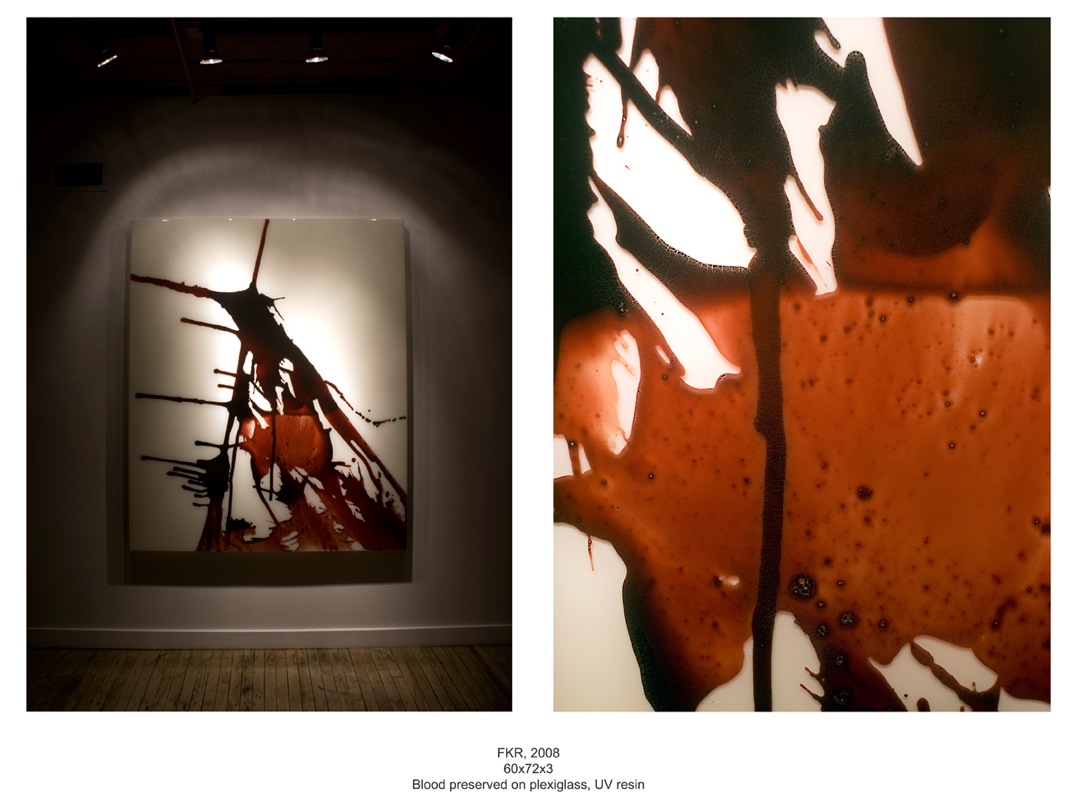
The feature that seemed to excite Eagles most about his work was the
tendency for the accidental designs to resemble micro- and macrocosms.
One might see a cell in an image, or else, the exploding of space matter
in a cosmic vastness. Whatever you see in these images, I think I can
say for sure you'll be glad you looked. Intriguing, intricate, and beautiful,
Eagles' blood pieces deserve a study. They're hanging in the David Weinberg
Gallery at 300 W. Superior Street until December 30th.
|





